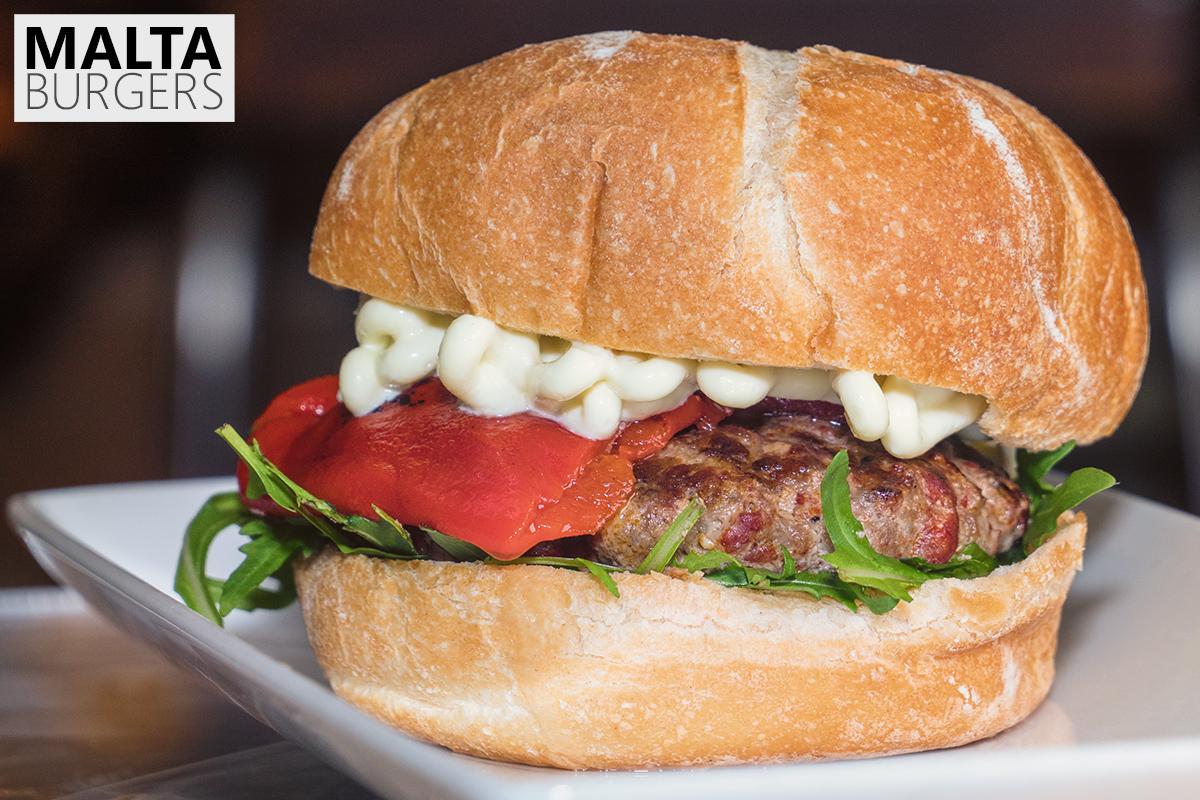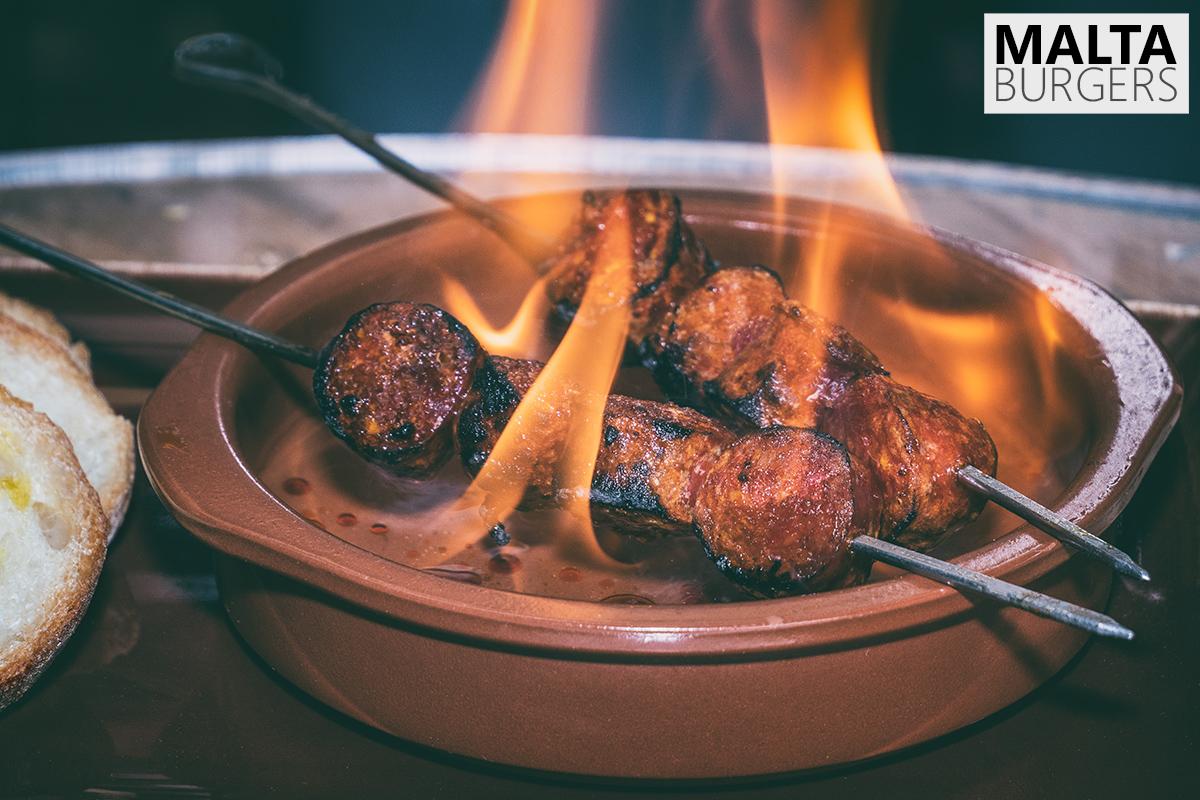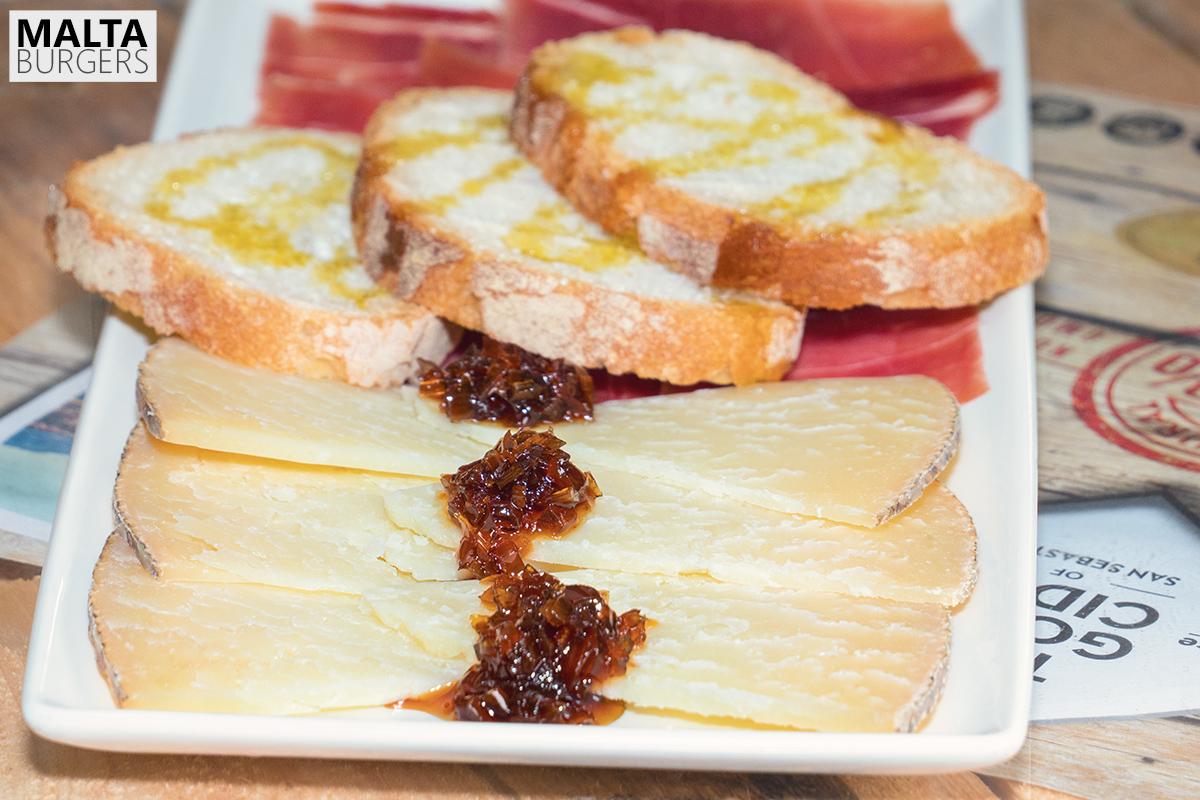It’s not the first time that some of you rave endlessly about one particular Spanish restaurant in Sliema. La Vida looks like an unpretentious and hushful place during the early hours of the day, but at nightfall, it unwittingly turns into a Fiesta place brimming with food and wine! What beef does this Spanish eatery have with burgers? We hoped that it’s beef of the good kind, so we cleared our schedule and commuted to the busiest part of Sliema. We went in thinking that we were here for a burger, but instead ended up in the middle of a sensational Spanish Fiesta! This is how it all went down…
La Vida is the brainchild of David and Elaine, a very sweet couple who you can’t but fall in love with. David is originally from Australia and Elaine is from Ireland. So what are they both doing in Malta, out of all places? Elaine comes from a finance background but she travelled extensively throughout South America. This is when she became enamoured with this very particular cuisine. She spent all her free time attending culinary courses until she was able to replicate the key staples of the South American food she liked so much. Let’s remember that in 1492 the Spanish Empire expanded across the Caribbean Islands, half of South America and most of Central America. During this colonial period until 1832, almost 2 million Spaniards settled in the Americas and a further 3.5 million immigrated up until the 1950s. So it’s no wonder that South American cuisine is inspired by the Spanish one!
Needless to say, Elaine’s friends, who became her endless dinner guests, were thrilled! These same friends sparked the idea of La Vida, which literally translated from Spanish means life. David and Elaine visited Malta on many occasions until 2 and a half years ago they bought the corner place in Sliema and realised their project of passion. And that’s when the first stumbling block hit. Raw Spanish ingredients were not a very common thing here in Malta. So what do you do? You ship all the ingredients and spices directly from Spain! You can’t get more authentic than that.
We all know that the Spaniards love their food. Believe it or not, the typical Spaniard consumes more food in a day than most Maltese do. Lunch in Spain is a bit different from what we’re used to here in Malta. The large midday meal is known as La Comida and is made up of several courses with around five choices in each. Spaniards believe in taking their time and enjoying their meals. That is why you can expect lunch to last an hour and a half or even longer, and it’s very common for them to take a two to three-hour break from work to enjoy lunch! And let’s not forget the wine! They also take a short siesta afterwards so essentially, the entire country closes up shop from 13:30 to 16:30! You thought that was it, but it’s not. La Cena (dinner) is a lighter meal, generally eaten between 21:00 and midnight. And that’s where our culinary adventure at La Vida begins!
If you like to keep to yourself and want to enjoy a quiet dinner, you need to visit this restaurant at around 18:00. If you want to experience the atmosphere of a Spanish party, don’t come here before 21:00! We thought we would drop for a quick burger visit, but we cannot savour the burger of the day until we taste the obligatory fiesta dishes! Appetizers, or entrantes as they are known in Spain, are simple dishes to start the meal. These include plates of ham or other cured meats and cheeses that are ever so popular in Spain. Just like a good magic show, the magician will save his best illusion for the final and will elude you with an ensemble of trickery that will wreck your brain in disbelief! And we suspect that the Spanish also do this, but obviously, with food. We’re game and opt for a trio of Spanish favourites.
First up is the scarily named Chorizo al Infierno! The Chorizo is one of Spain’s most popular and versatile ingredients, and this one happens to be a popular tapa in Andalucia. This spicy pork sausage is served in a cazuela, a shallow terra cotta dish. It’s a seriously impressive and eye-catching fare to experience! Whilst it can be enjoyed at any time, in Spain, this is typically enjoyed as an autumnal winter dish, given the heat of it and the fact that it is also very filling! Although it comes already cooked, we charred our spicy red sausages, because that’s the way we envision meat in hell!
Next dish coming out from the kitchen was a Plato Combinado. This is a mixed platter of Spanish ham and cheese. The Jamon is a dry-cured Spanish ham which is served in thin slices. This one comes from Monroyo, a municipality in the Eastern parts of Madrid with only 300 inhabitants. This is the one ham you need to try out if you’re not familiar with Jamon as it’s not too complicated, slightly sweet and mostly hammy. The other half of the platter is made up from Queso (cheese). This is a Manchego, which is a typical cheese made from the milk of sheep of the Manchega breed. It’s generally aged between 60 days and 2 years. This one is aged for 5 months so it has acquired the “Curado” flavour which is a bit on the caramel and nutty side with a distinctive acidity. If you are a cheese aficionado you must definitely try this one.
Just like they do them in Seville, the Spanish Croquetas (croquettes) are a ubiquitous delicacy that have a hard crust on the outside and softness at the centre. These are usually served as part of a Tapas feast with Manchego cheese. We opted for a mix of chicken and prawn croquettes. These are handcrafted one by one in the La Vida kitchen because that’s the way artisan Spanish food is made. The croqueta mixture is chilled so it’s not sticky and becomes easier to roll. The crumbing station is lined up with flour, egg wash and breadcrumbs so the whole process of rolling the meat in the breadcrumbs stays as clean as possible. The chicken one has a slight spicy taste as it’s marinated with paprika and comes with an aioli sauce as a side. The prawn croquettes were our favourites. They are crispy, full of sea flavour and beautifully seasoned. There’s also a yoghurt sauce with garlic and herbs that tastes divine and elevates the prawn’s fresh flavour by a tenfold.
After all the appetizers have been consumed and dealt with, it’s now time for the atracción principal, which is the Spanish burger we originally came for. The 150gr patty is made from ground beef, flavoured mixed with smoked paprika and garlic. But the Spanish kitchen guys have a trick up their sleeves. They have put actual chorizo sausage inside the patty itself! We’ve seen Spanish inspired burgers in the past years, and usually, the chorizo comes as a thin slice on top of the patty, replacing the usual bacon. Not so here! The chorizo is a fermented, cured, smoked sausage, which is here used to add flavour to the beef. This Spanish chorizo gets its distinctive smokiness and deep red colour from pimentos which are dried, smoked red cherry peppers. We liked it a lot, even though it’s a bit of an acquired taste. Just like the Maltese patty with sausage inside, this one is very unique. It deviates from the puritan 100% beef patty, but that’s the Spanish way for you and me! Nothing gets us excited like a hearty, spicy and brawny burger patty that has a touch of heat and stays tender as you bite through. It’s a juicy delight in every sense of the word. The patty is seared on the grid and finished in the oven.
The vegetable elements come in the form of a roasted piquillo pepper from Lodosa (Northern Spain) on top and a bed of rocket leaves. With a deep red colour and a mild, sweet, slightly tart taste, piquillos have much more flavour than roasted red bell peppers. Their texture is more delicate due to having a thinner flesh than a bell pepper. The burger is presented in a toasted Kaiser bun with olive oil and spiced mayonnaise which is creamy, tangy and very zesty. The Kaiser roll is quite a delightful replacement for the more traditional burger bun we see every day. This hard roll is a crusty round bread that originates from Austria and has been around since the late 1700s. It is made from white flour, yeast, malt, water and salt, with the top side usually divided in a symmetric pattern of segments resembling a crown. It’s soft enough not to destroy the roof of your mouth but hard enough to support the meat. It’s fairly plain in flavour, with a flakier texture than other burger buns, and most importantly it does not distract from the combination of beef, chorizo and mayo sauce inside. Quite surprisingly there’s no cheese inside this burger, but this simple combination of flavours was totally tasty.
The Spanish burger is accompanied by a small bowl of Patata bravas. These potatoes are one of the simplest and most popular Spanish tapas, consisting of fried potatoes that have been cut into irregular cubes of about two centimetres, then fried in oil and served warm with fresh sauce. You can also opt for a fresh tortilla as a side, which is a Spanish omelette made from mashed potatoes, onions and eggs plus some secret ingredients that make this one oh so flavourful.
After the late night dinner, Spaniards continue their socializing in cafés or pubs. The last stop on the way home from an evening of fun might be to a churreria. Churros are pastries, made out of fried dough. The closest thing that we have here are doughnuts. Fresh churros are served hot and sprinkled with sugar. The ones from La Vida are all that, plus they come with dark & white chocolate spreads. They are devilishly delicious and bring our Spanish night to the sweetest possible end.
David and Elaine have cultivated a high standard eatery, that’s full of life and happy people. It’s so authentic that you can spot actual Spanish people in the kitchen and tending tables. The restaurant is a chambered space with an open kitchen that could accommodate a whole legion of burger eaters. Even though burgers are not part of the traditional tapas experience in Spain, they have now found their own place in the modern way of having lunch and dinner, the Spanish way. Fingers crossed, we will see more burgers on La Vida’s menu in the months to come.











